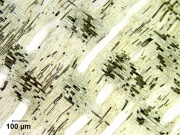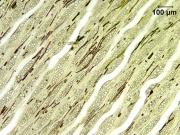Applewood
Description
Deciduous, fruit bearing trees, Malus domestica and Malus sylvestris, from the rose family. Apple trees are native to the Caspian and Black Sea regions. They were introduced in America by the early settlers. Apple trees are primarily grown commercially for their fruit, rather than their timber. The pinkish buff wood has a straight grain with a fine, even texture that polishes well. Applewood is used for turnery, inlay, veneers, carving, handles, pipes, and cabinetry.
Synonyms and Related Terms
Malus domestica; Malus sylvestris (European wild apple); Pyrus malus; ¿ble (Dan.); Apfelbaum (Deut.); manzano (Esp.); pommier (Fr.); melo (It.); appel (Ned.); eple (Nor.); jabùoñ (Pol.); macieira (Port.); äpple (Sven.); fruitwood
Other Properties
Small tree growing to 12 m with twisted trunk and low branches. Bark = brown, thin and scaly Leave= simple alternate, elliptical with fine serrated edges.
Specific gravity = 0.71 (air dry)
| Density | 40-50 ppcf |
|---|
Additional Information
° Schoch, W., Heller, I., Schweingruber, F.H., Kienast, F., 2004:Wood anatomy of central European Species: Pomaceous Fruit:Apple-Tree, Pirus malus L.
Additional Images
Sources Checked for Data in Record
- F. H. Titmuss, Commercial Timbers of the World, The Technical Press Ltd., London, 1965
- Website address 1 Comment: Virginia Tech Dendrology website at www.fw.vt.edu/dendro/dendrology/main.htm (Accessed Dec. 9, 2005)
- Wikipedia, the free encyclopedia, at http://www.wikipedia.com Comment: http://en.wikipedia.org/wiki/Apple (Accessed Dec. 9, 2005)
- Edward Reich, Carlton J. Siegler, Consumer Goods: How to Know and Use Them, American Book Company, New York City, 1937
- Gordon Hanlon, contributed information, 1998
- CRC Handbook of Chemistry and Physics, Robert Weast (ed.), CRC Press, Boca Raton, Florida, v. 61, 1980 Comment: density=41-52 ppcf (0.66-0.84 g/cm3)



